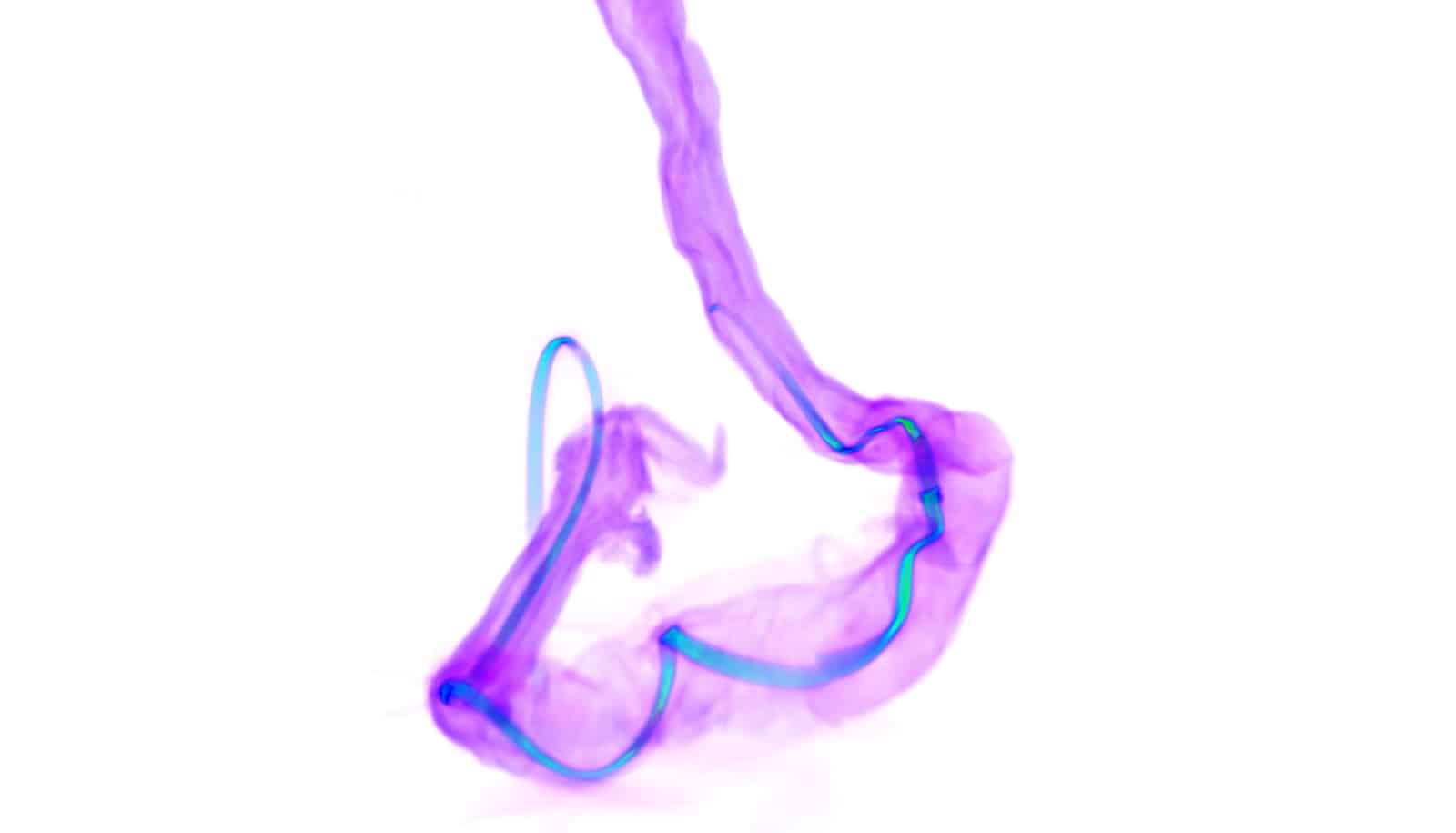A new invention called “NeuroString” is a soft implantable probe that lets researchers study the chemistry of brain and gut health.
“The mainstream way people are trying to understand the brain is to read and record electric signals,” says Jinxing Li, the paper’s first author and an assistant professor in Michigan State University’s College of Engineering. “But chemical signals play just as significant a role in brain communication, and they are also directly related to diseases.”
The researchers describe the probe in the journal Nature.
Imbalances in chemicals known as neurotransmitters, such as dopamine and serotonin, are linked to many mental health conditions and neurological diseases, including addiction, depression, and Parkinson’s disease.
The team designed this first iteration of NeuroString to measure dopamine and serotonin present in both the brain and the gut’s enteric nervous system, which also plays a key role in physical health and mental well-being. Dopamine is best known for its role in the brain’s reward system. Serotonin is the target of antidepressants such as Prozac. Both neurotransmitters are also involved in sleep, movement, and digestion.
A softer probe
Existing implants that measure dopamine and serotonin are made of rigid, brittle materials including glass and carbon rods. The implants can not only shatter, but also chafe against squishy tissue, inflaming cells and degrading the implant.
“We developed a soft probe that can measure the chemical dynamics of soft organs in their natural states,” says Li, who’s also a member of Michigan State’s Institute for Quantitative Health Science and Engineering, or IQ. “We’re not damaging the biology—or the probe.”
To design the NeuroString probe, Li spent about a year testing different materials. The researchers knew they wanted to use carbon for its electrochemical properties. Carbon can sensitively and selectively detect chemicals of interest while providing attractive electrical properties to connect with sensor circuitry.
But carbon comes in many forms, including graphite, nanotubes, and diamond. After extensive screening, the team decided on graphene, which consists of atomically thin sheets of graphite.
“We found that graphene gave us really good selectivity and sensitivity and we could also embed it in a soft rubber matrix,” Li says. “Graphene itself is not very stretchable but if it is entangled as a mesh and embedded in a rubber, then it becomes stretchable.”
“It’s like a kirigami. If you cut patterns into paper and then you can stretch it, you see some kind of hollow connected paper network,” says Zhenan Bao, chemical engineering professor at Stanford University, in whose lab Li began the project. “It’s the same thing here, but the network is made of graphene sheets.
“The sensor is soft and elastic, like a rubber band, which does not cause damage when implanted into the brain or the gut, which is not only soft but also constantly moving,” Bao says.
NeuroString’s future
The team already has improvements in mind for NeuroString before clinical tests in humans: Smaller size and wireless communication. Currently, the sensor’s width is comparable to a human hair. The goal is to have it closer to the size of a cell, or about a 90% reduction in diameter.
As a long-term goal, Li and his colleagues are working toward devices that won’t just monitor brain and gut chemistry, but can also intervene if the probes detect something is amiss. They’re envisioning future NeuroStrings that could, for instance, help get neurons back in synch if something causes the cells to misfire.
“If we’re able to make measurements of molecular concentration and provide stimulation to modulate it with the same device, we could provide truly personalized treatments,” Li says.
In the meantime, though, the team has already demonstrated in preclinical settings and with animal models that NeuroString can be a powerful tool to explore brain and gut chemistry. For his part, Li is thinking about projects that would better explore the biochemistry of Parkinson’s and depression.
“There are a lot more interesting questions we can ask,” he says.
Funding for the work came from a Stanford Bio-X seed grant and a Wu Tsai Neuro Institute Big Idea grant.
Source: Kristin Lynn Sainani for Stanford University, Matt Davenport for Michigan State University

